By Mara Dumitru, Allyson Smith, Beth Burton, Alaysia Stremel and Muhammed Mukhtar | @justearthnews | 29 May 2024, 07:01 am Print
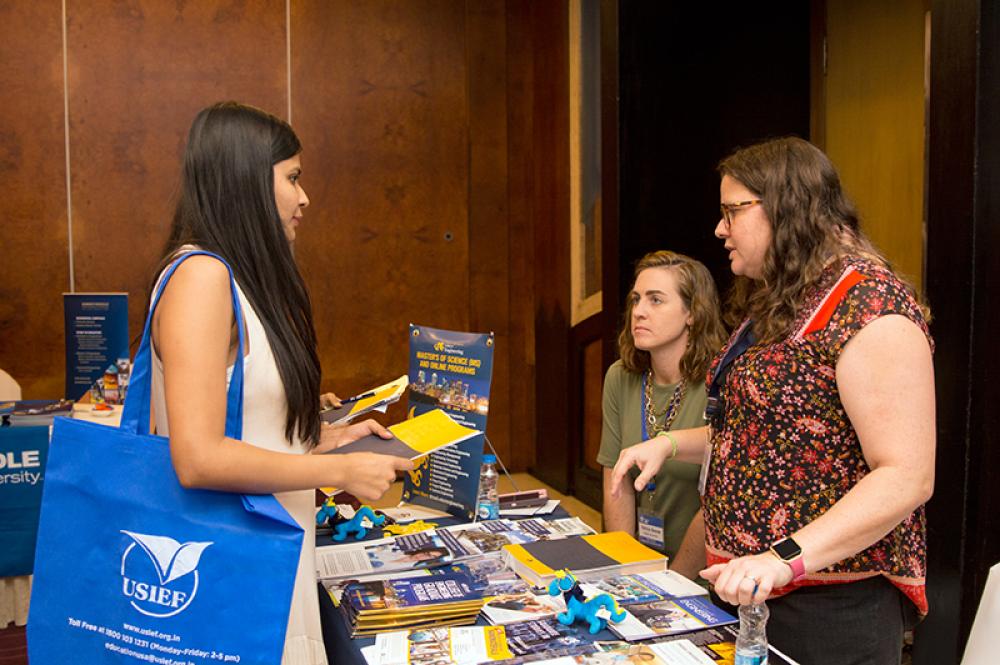 Immigration
Immigration A file photo of USIEF-EducationUSA University Fair in Kolkata. Photo courtesy: American Center, Kolkata
Meera Chandrasekhar left India in 1975 to study in the United States, driven by her passion for experimental physics. Dr. Kattesh Katti arrived in 1990 and eventually became a pioneer in nanotechnology and nano-medicine. Vineet Singh arrived 27 years ago to expand his research in microbiology.
All came to America on student visas, embarked on journeys that took them through Missouri, and made their mark on America’s scientific landscape. And today, more and more young people hope to do the same.
A recent surge in student visas for Indians means the South Asian nation now sends more international students to the U.S. than any other country in the world, according to the U.S. Embassy and Consulates to India. Indian student enrollment rose 35% between the 2021-22 and 2023-24 academic years and is projected to exceed 1 million annually by 2030.
Often, young people are inspired by those who came before them.
Overall Indian immigration to the U.S. surged after the elimination of national-origin quotas in 1965, and today Indians rank as the second-largest immigrant group in the U.S., according to the Migration Policy Institute. There were 2.7 million Indian immigrants in the U.S. in 2021, 6% of the foreign-born population. Four-fifths hold at least a bachelor’s degree and have median household incomes more than double those of native-born Americans.
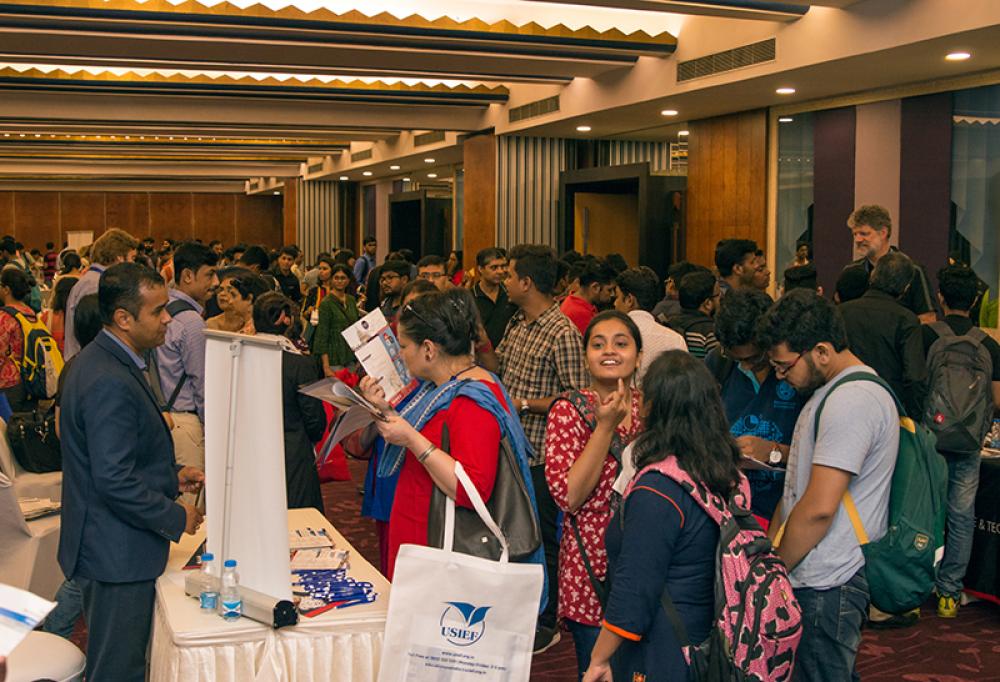 An aspiring Indian college student enquires about courses at an education fair in Kolkata organised by USIEF-EducationUSA University Fair. Photo courtesy: American Center, Kolkata
An aspiring Indian college student enquires about courses at an education fair in Kolkata organised by USIEF-EducationUSA University Fair. Photo courtesy: American Center, Kolkata
The influx of Indian students reflects the enduring allure of American universities, renowned for their academic excellence and research opportunities. It also underscores the role of education in fostering global connections, cultural exchange and diversity within the United States.
"The U.S. remains a land of opportunities, driving continued immigration despite changing circumstances," said Vineet Singh, who immigrated from India to the United States 27 years ago and is now teaching at A.T. Still University in Missouri.
According to Chennai-based US visa consultant Sandya Ramu, while the most common way to immigrate to the US is through employment, many gradually change their student visa to work visa.
"Work visas for students also come under the same categories- H-1B, L-1 and O-1. Students need to come under the eligibility criteria," she said.
“Obtaining a work visa in the US is a complicated process when compared to other countries. Each visa category has different requirements. It is time-consuming and involves extensive paperwork," she said.
Ganga Devi, an Indian American homemaker who has been living in Kansas City for the past 30 years, said work visas are not readily available like before.
"Since the whole COVID-19 situation, I've noticed more students aiming to study in the US. Work visas aren't as readily available as they used to be, so students are opting for student visas instead.
“After finishing their studies, everyone will look for an extension to do jobs after their studies," she said.
STAY OR GO BACK?
Some Indian students take advantage of educational opportunities in the U.S. with the goal of returning home to build their careers. But others hope to stay in the U.S. and make new lives in an adopted country, with 88% of Indian PhD recipients planning to remain in the United States after graduation.
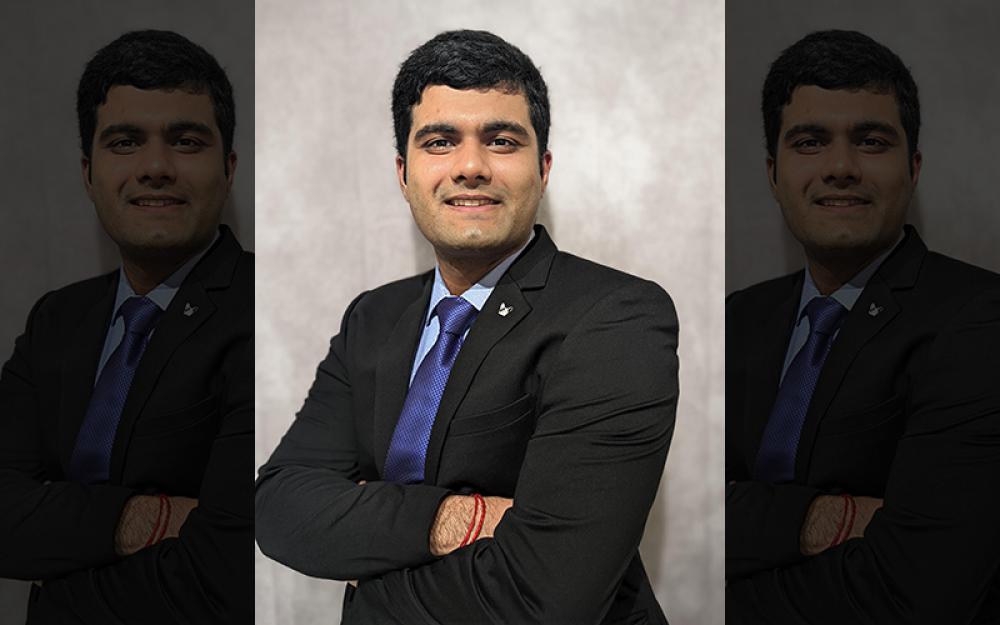 Sairam Ganesh, a chemical engineer from West Virginia, says to get a green card one has to wait for 21 years and during this period they cannot switch jobs because if you quit your job, you will have to reapply for another H1 visa.
Sairam Ganesh, a chemical engineer from West Virginia, says to get a green card one has to wait for 21 years and during this period they cannot switch jobs because if you quit your job, you will have to reapply for another H1 visa.
Sairam Ganesh is among those who decided to stay. He came to the United States in 2019 to pursue his master’s degree in chemical engineering at the University of Maryland, completing it in 2021. He has been working at the Philadelphia-based Axalta Coating Systems, which makes paint for industrial appliances, cars, trucks, and houses.
He initially arrived on an F-1 student visa but was eventually able to get an H-1B work visa, which required his company to complete and submit paperwork. Obtaining a work visa is generally harder than a student visa because it’s distributed through a random, lottery-based system.
“You’re only given one attempt, but if you did your masters or your education is in a STEM field, that will give you two attempts,” he said. “So, in total you’ll get three attempts to apply.”
Ganesh was one of the lucky lottery winners, securing a work visa valid for six years. After that, if he wants to stay in the U.S., he’ll have to apply for a green card or go back to school and later apply for a work visa again.
Shriya Biswas of Kolkata, India, doesn’t know what she wants to do when she finishes her undergraduate degree at Union College in New York. She’s on a student visa, studying neuroscience and political science. She said whether someone stays in America or goes home to India depends on an individual’s goals.
“It completely depends on what a student wants to do with the degree they majored in," she said.
BLAZING A PATH
For many Indian immigrants who arrived decades ago, a college education became a doorway to America.
Meera Chandrasekhar had a master’s degree from India but wanted to further her education in the U.S., earning a spot at Brown University in Rhode Island.
At first, she planned to go back to India and be a teacher, she said. “But as I went through my degree, I realized that the opportunities for research were really what was exciting and larger opportunities were in the Western world.”
After earning her PhD in condensed matter physics, she got a postdoctoral fellowship at Max Planck Institute in Germany. There, she met a fellow Indian immigrant and fell in love. They returned together to the U.S. and started working at the University of Missouri’s physics department, where she stayed for 40 years.
Reflecting on her immigration journey, Chandrasekhar emphasized the importance of financial support for international students. As a recipient of fellowships and other support, she relied on university funding to sustain herself during her studies.
"I think one thing that is really unique about the U.S. is how it invites immigrants," she said.
Zulfiqar Ahmad shares that sentiment. In the late 1990s, he left India to pursue a career in biochemistry and biophysics in the United States, where he is now a professor at A.T. Still University, an osteopathic medical school in Kirksville, Missouri.
"When I decided to stay in the United States, it was for my daughters. I wanted them to grow up in a place free from discrimination and danger,” said Ahmad.
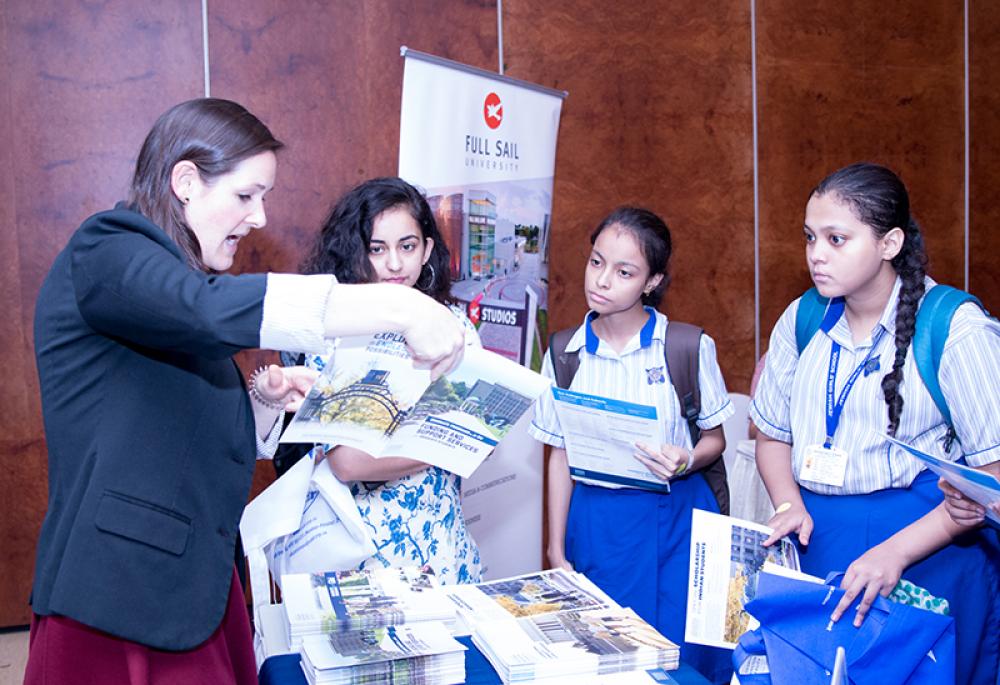 Aspiring Indian high school students engage with representatives of American universities at an education fair in Kolkata co-hosted by United States-India Educational Foundation (USIEF). Photo courtesy: American Center, Kolkata
Aspiring Indian high school students engage with representatives of American universities at an education fair in Kolkata co-hosted by United States-India Educational Foundation (USIEF). Photo courtesy: American Center, Kolkata
Ahmad's journey began in New Delhi, where he completed his Ph.D. in biosciences from Jamia Millia Islamia University and then taught medical, nursing and graduate students at Hamdard University.
In 1998, Ahmad seized an opportunity to further his research in the United States, accepting a postdoctoral fellowship at the University of Rochester Medical Center.
Despite facing challenges, including resistance from university administrators and bureaucratic hurdles in obtaining a green card, Ahmad stayed focused on his goal.
Throughout his career, Ahmad has made significant contributions to the field of biochemistry, with a focus on understanding the role of an enzyme called ATP synthase in human health and disease.
His research has implications for a wide range of conditions, including cancer, tuberculosis and bacterial infections.
His family has also benefited from his decision decades ago. Two of his daughters are in medical school and one is working as a doctor.
"My daughters' gratitude for bringing them to the United States is the greatest reward I could ask for," Ahmad said. "Their success is a testament to the power of perseverance and the enduring spirit of the immigrant experience."
Perseverance was a hallmark of Dr. Kattesh Katti's journey as well.
He was born into a family of modest means in Dharwad, India, and recalls being shaped by the values of simplicity and resilience. He said his parents, both educators, instilled a deep appreciation for knowledge and hard work.
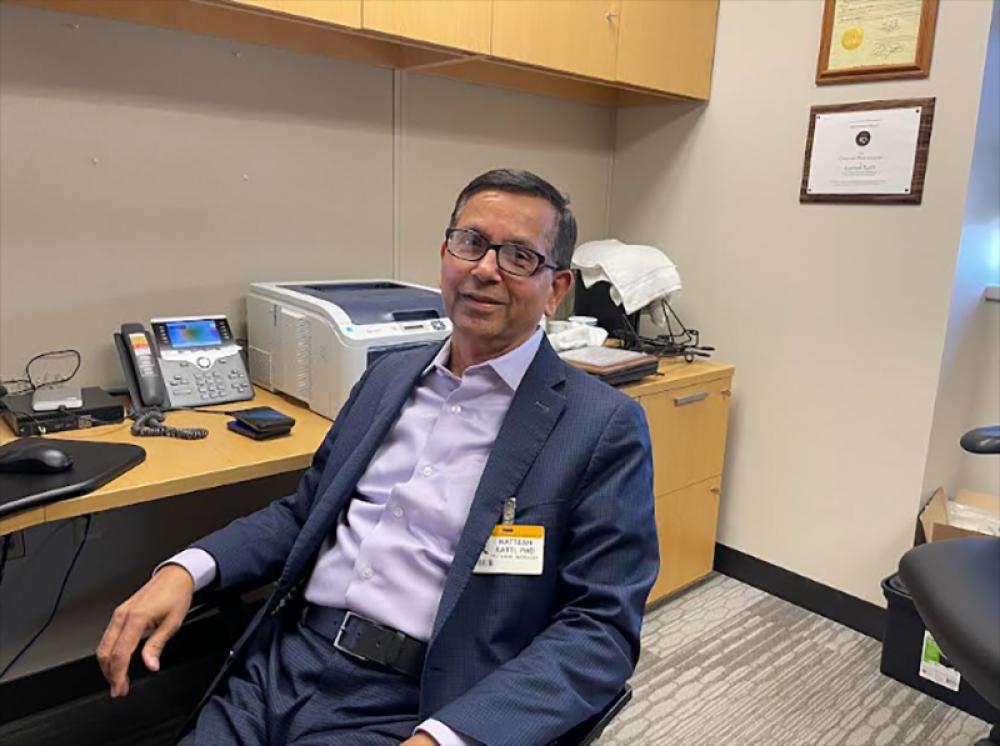 Dr. Kattesh Katti, who arrived in 1990, is a pioneer in nanotechnology and nano-medicine. A professor of Radiology and Physics, he is now Director of Institute of Green Nanotechnology and Director of University of Missouri Cancer Nanotechnology Platform. Photo courtesy: Mizzou Group
Dr. Kattesh Katti, who arrived in 1990, is a pioneer in nanotechnology and nano-medicine. A professor of Radiology and Physics, he is now Director of Institute of Green Nanotechnology and Director of University of Missouri Cancer Nanotechnology Platform. Photo courtesy: Mizzou Group
After studying chemistry at the Indian Institute of Science, his academic achievements earned him a fellowship in Germany in 1985, where he immersed himself in the world of nanotechnology and medical research.
His experience abroad – which also included study in Canada – not only expanded his scientific horizons but also instilled in him a global perspective on research and collaboration.
After coming to the U.S. he focused on nanotechnology in healthcare. He now directs the University of Missouri Cancer Nanotechnology Platform and is considered a pioneer in applying nanotechnology to cancer treatment and diagnosis.
Dr. Kattesh Katti is known globally as the “Father of Green Medical Nanotechnology" for his work combining non-toxic nano agents with traditional Ayurvedic and holistic medicine.
Dr. Katti credits his many mentors with helping him reach his scientific goals and now tries to give back to a new generation of researchers – including other immigrants from India.
He said he tells them: "Excellence doesn't come just like that. There is hardship involved. Go through that. If you have to do it multiple times, so be it. Every failure, you're learning.”
(This report is a cross-country collaboration between the students from the Business Journalism department of the University of Missouri, USA headed by Prof. Randy Smith, and young journalists from India. The project is overseen by Laura Ungar, reporter on the global health and science team at The Associated Press, and journalist Sujoy Dhar, founder of the Indian news agency India Blooms News Service.)
- World’s top 100 weapons makers hit record $679 billion in 2024
- Asia on the move: Why millions are being driven out by job crises and failing services
- Why Personal Loans are Gaining Popularity Among Millennials?
- Record-breaking economic meltdown in Gaza — UN issues alarming warning!
- Global Industry Summit: Leaders assembly in Riyadh to debate tackling challenges



-1763561110.jpg)


